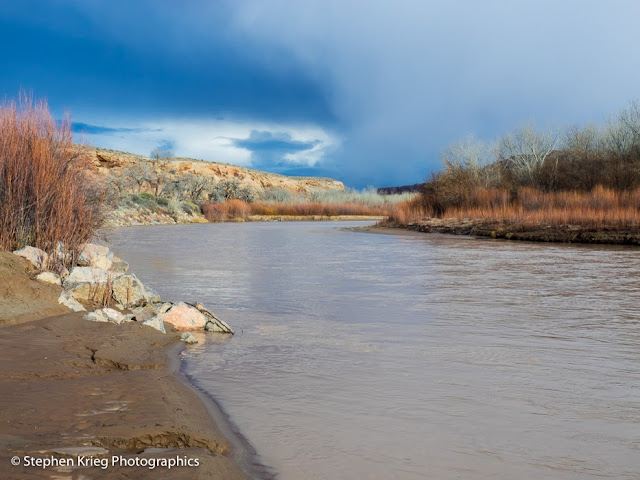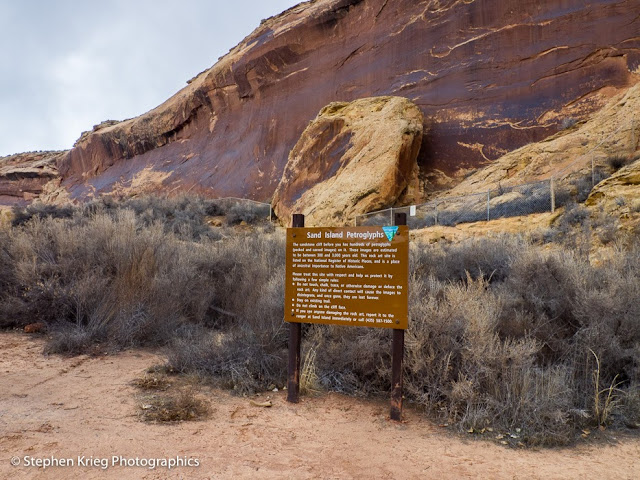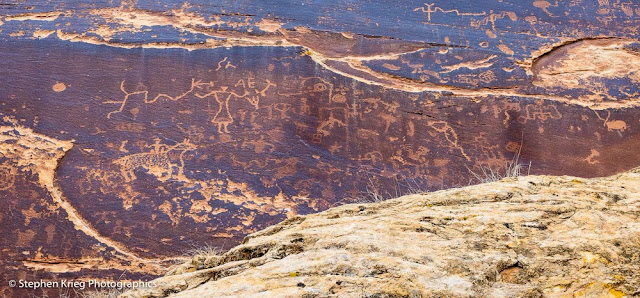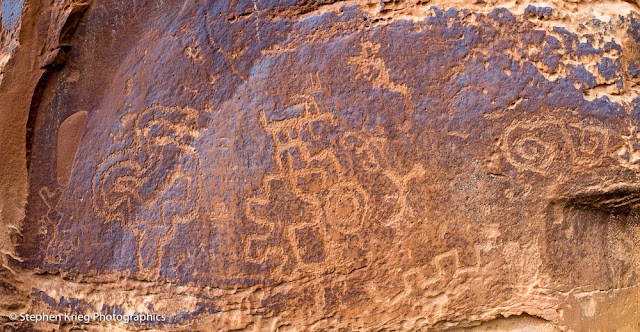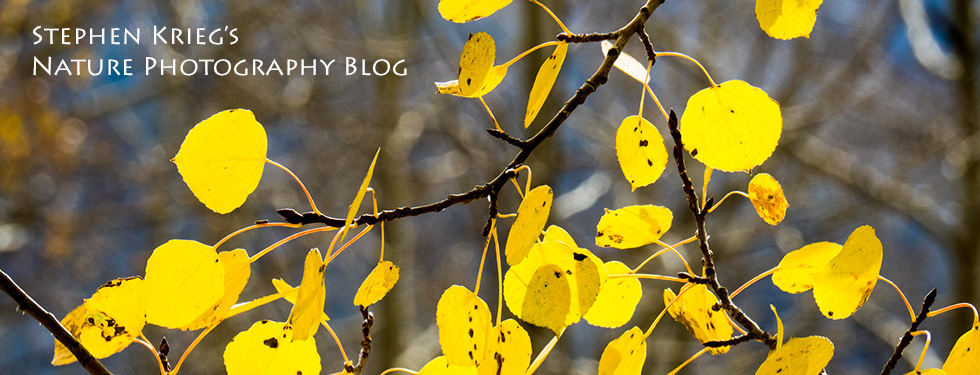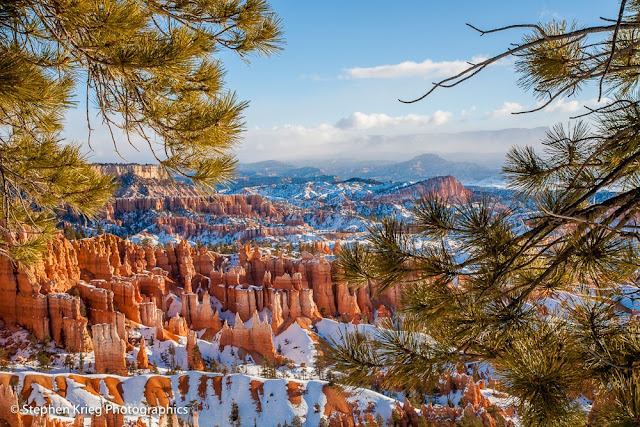 |
| Bryce Canyon from Sunset Point area, framed by Ponderosa Pine trees in winter. |
Talk about your Canyon Country Grand Staircase winter wonderlands. At the top of the list--including elevation wise--has to be Bryce Canyon National Park in southern Utah.
The colors of the Pink Cliffs change throughout the day with the sunlight and shadows, as they do year round. But when there is fresh snow to make each fin and hoodoo (irregularly shaped spires of rock) stand out, it's even more amazing.
 |
| Just after sunrise at Bryce Canyon. |
Bryce Canyon is high elevation. The rims in the park range from about 7,900 feet at the Visitor Center to about 9,000 feet at Rainbow Point at the south end of the drive.
 |
| Late afternoon sunlight and shadows at Bryce Canyon. The small tilted formation is called the Sinking Ship. |
The Grand Staircase is made up of all the layers of sedimentary rock that were eons ago uplifted from sea level to much higher in the sky. The bottom layers are exposed by the Colorado River at the Inner Gorge of Grand Canyon. The uppermost layers--the Pink Cliffs--are most spectacularly seen here at Bryce and at nearby Cedar Breaks National Monument.
 |
| Douglas-Fir trees down among the glowing fins. |
As spectacular as the views are from the Rim viewpoints, a hike down into the canyon makes for a whole other experience. The even cooler and moister habitats down among the fins of rock provide a habitat for huge Douglas-Fir (
Pseudotsuga menziesii) trees. The sunlight reflects off the orange limestone fins, contrasting with the clear blue high elevation Utah blue skies.
 |
| Moonrise just before sunset, from Bryce Point. On the far horizon is the Aquarius Plateau. |
And if you're fortunate to be able to stay until the end of the day at the right time of the month, you can watch the nearly full moon rise at sunset from Bryce Point.
Photo location: Bryce Canyon National Park, southern Utah.
© Copyright 2017 Stephen J. Krieg
